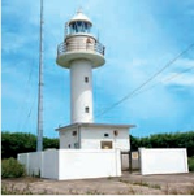Travel Reference
In-Depth Information
Ōjima is small and it has a particularly attractive “feel” about it. For some reason, it al-
ways seems welcoming when you're here. People are relaxed and friendly. It's hard to define,
but there is something special about the place. Because there are a couple of really, really
small, yet inhabited, islands, Ōjima may not necessarily win the prize for the smallest in-
habited island in the Ryukyus. But on a population per square mile basis for small islands,
it should win the prize for the most people on a small island in the Ryukyu-rettō. For other
than the ball park, there's barely a square foot that's not covered in housing. Why oh why oh
why oh—why does everyone want to live on Ōjima? Start again. Why everybody wants to live
here is hard to know, but oh they do so. It must be popular for a reason. Maybe it's the place
that has the best
soba
?
Our mangled affair with alliteration over, we'll leave Ōjima and take the coast road south-
west through the Itoman (
糸満
; Itoman) section of Okinawa. This constitutes the very south-
ern end of Okinawa Main Island and is often referred to as Shima-jiri (
島尻
).
Shima
means
“island” and
jiri
means “bottom”—and it really means bottom as in one's bottom, butt, but-
tocks, etc., so it quite literally means “Okinawa Island's bottom.” We'll take this route as far as
it will take us, to its end at Cape Kyan (
喜屋武岬
; Kyanmisaki). Altogether, it's just a bit under
11 miles (18 kilometers).
At Cape Kyan is, naturally enough, the Kyan Monument, a lighthouse, and some great
views over the Kyan cliffs to the ocean beyond. From here we can go nowhere but north.
We've visited all the islands on Okinawa's Pacific Ocean side and reached the island's south-
ern end. Now we'll head north along the island's west coast and visit the islands on Okinawa's
East China Sea side. There are many, many islands on this side of Okinawa-hontō, far more
than on the Pacific Ocean side.
Cape Kyan Lighthouse on Okinawa's southern tip.

